Entryway lighting ideas – 10 expert ways to get the light right in an entrance
With their delicate interplay between function and form, all entryways and hallways benefit from a well-executed lighting scheme


Entryway lighting ideas can make or break an interior scheme, and as the days get shorter it's more important than ever to create an inviting and relaxing space from entrance to exit.
From statement pendant lighting to sculptural table lamps and wall sconces, there's a design-led array of options to suit individual entryway ideas, tastes and budget that can all make an entryway more inviting.
Sourcing entryway lighting that shares a design dialogue with your furniture, storage, flooring and color scheme will help your space feel sophisticated and considered. Look for light fittings in similar shapes, thickness and, of course, co-ordinating finishes. We show you where to start when planning an entryway lighting scheme.
Entryway lighting ideas – 10 key steps to lighting your entrance
A layered approach to your hallway lighting ideas will not only set the mood in your entryway but also bring interest depth to the first thing you see when you enter your home.
1. Install recessed lighting above an entryway window seat
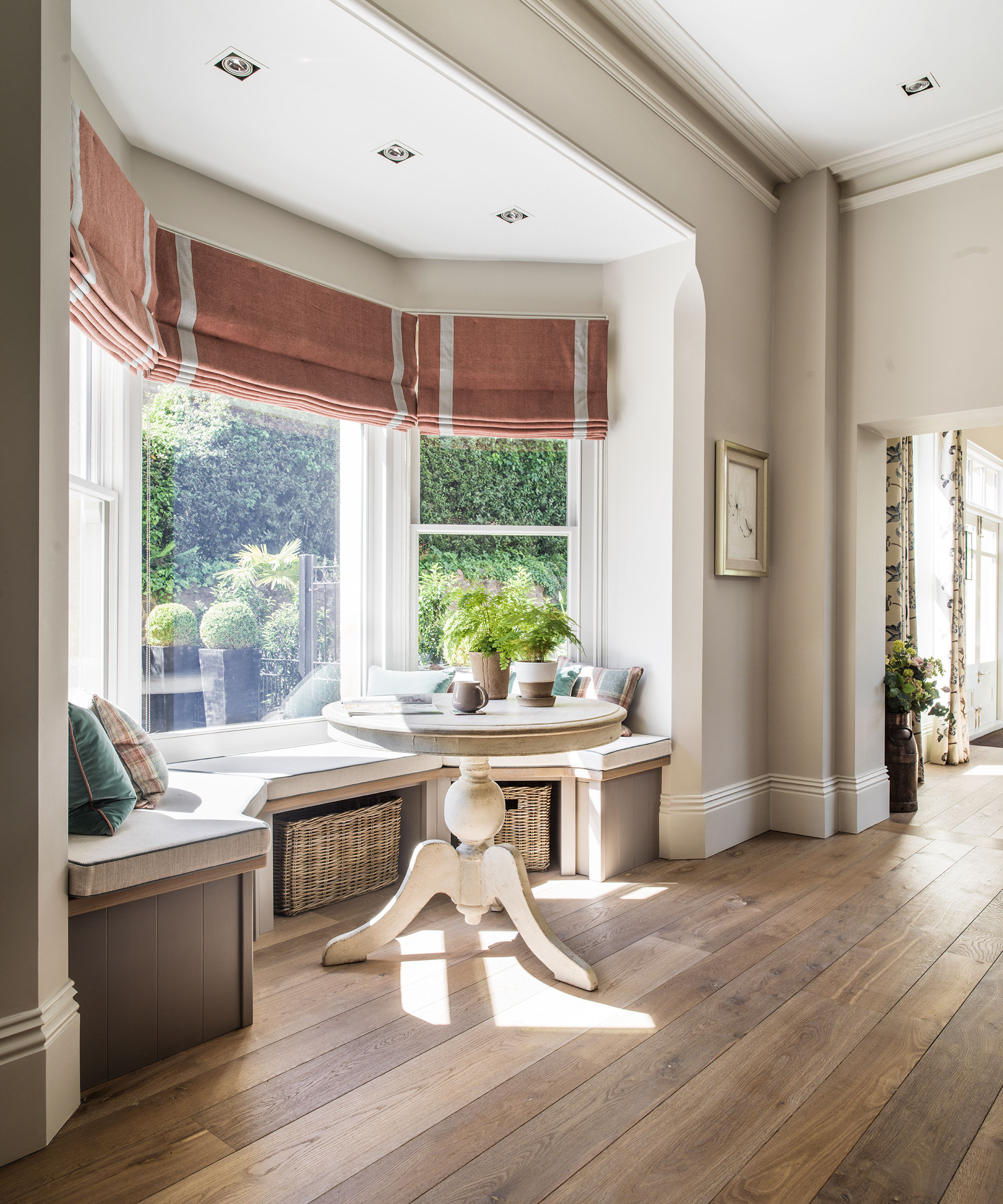
In more traditional homes, we are often wary of having downlights or recessed lighting, and for good reason – they are often poorly placed and rarely serve their purpose. Directional downlights or LEDs will highlight artwork and window treatments. The good news is that energy-efficient LED lighting has now come of age. Choose bulbs with a warm colour temperature. Alternatively, place table and floor lamps around the room where people sit, and ensure they are on dimmer switches to allow for greater flexibility.
‘Add blinds to the window in order to prevent harsh shadows and to create even, ambient lighting,’ says Nicholas Engert, interior design and lighting consultant.
2. Add interest with sculptural lighting

Use light to highlight the architectural strengths – and impressive size – of a room. A timeless approach is to frame a console or table with an oversized or sculptural lamp or sconces. ‘It is also an opportunity to add pattern or color with a decorative base,’ says Nicole Salvesen, co-founder of Salvesen Graham.
'In a move away from purely functional designs, consumers are increasingly opting for lamps which operate as stylish objets even when switched off,' says Anna Cross, buying manager, Habitat. 'Bold, sculptural styles are an easy way to instantly elevate an entryway, hall or landing space.'
3. Double up on pendants
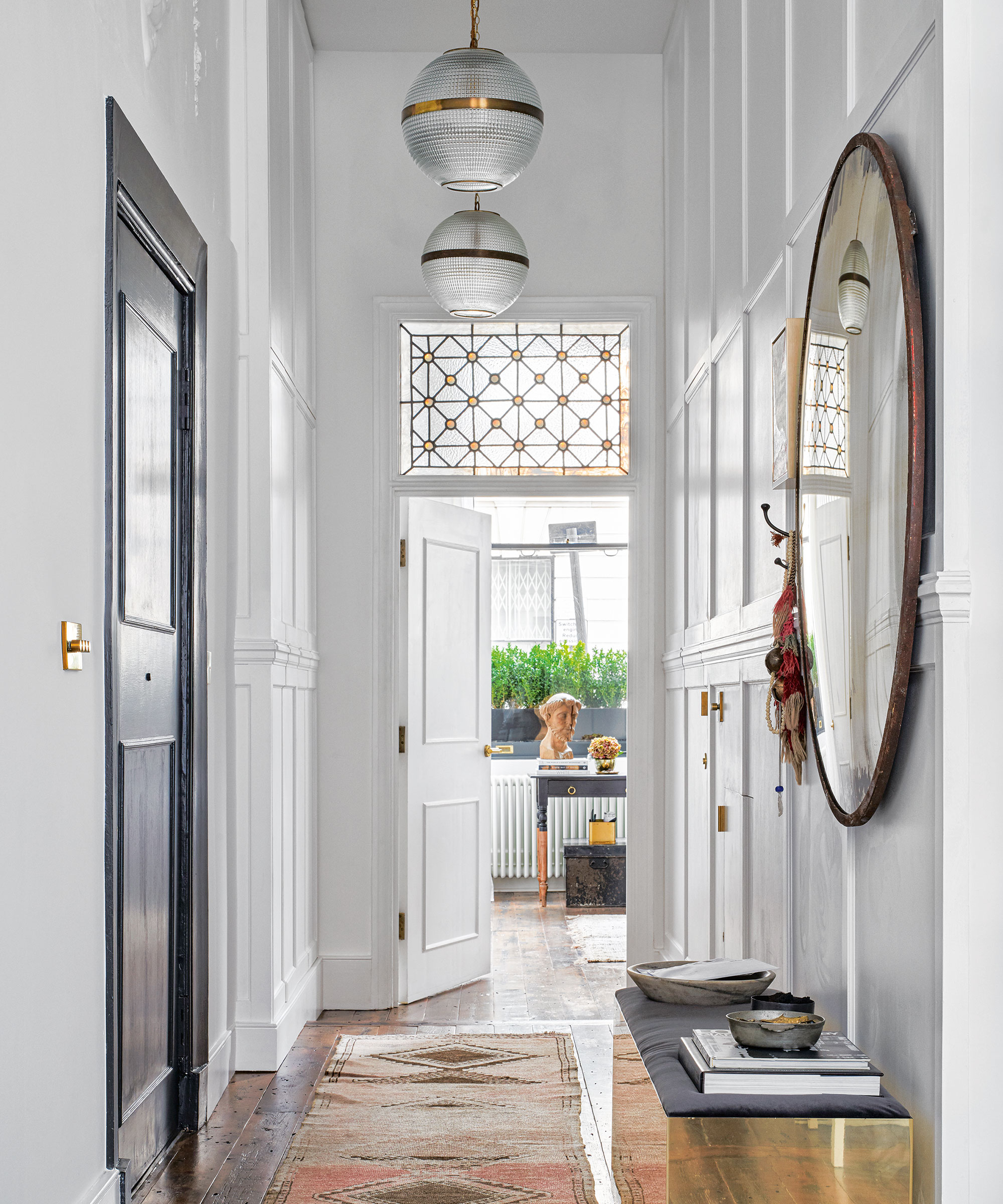
If you’re going for one or two statement lights, make sure it’s a keeper by seeking out timeless designs.
‘Statement pendants work well on tall ceilings, especially in a narrow corridor,’ says Natalie Mann, New Product Development Co-ordinator for Iconic Lights. ‘It draws the eye up and accentuates the height – and don't be afraid to double up on designs.' Here, a duo of statement pendants are the focus of this narrow space, providing general lighting further enhanced by reflective surfaces.
4. Curate a bespoke lighting scheme for your hall
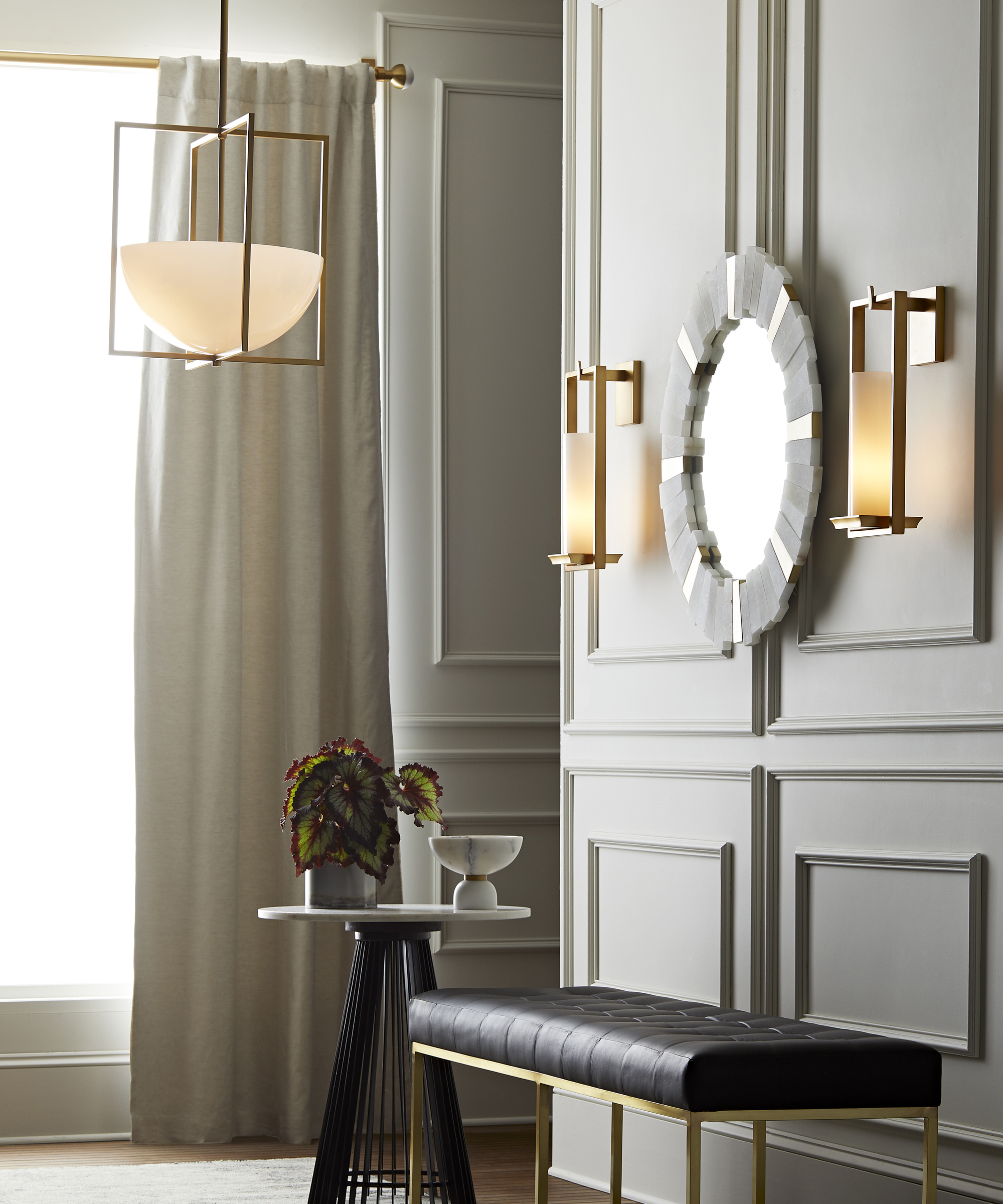
When commissioning bespoke joinery, ask the carpenter to make allowances for internal wiring from the start. This will allow for some entryway lights to be built into the unit, removing the need for trailing wires from standalone lamps or wall lights, resulting in a cleaner finish.
‘An interesting room is made up of many layers that allows the eye to travel,’ says interior decorator, Sarah Brown. Introduce decorative flourishes to your hallway lighting by using a combination of aesthetically intriguing wall and pendant lights, such as in this scheme by Arteriors.
5. Plan a symmetrical scheme

For a classic look, try taking a symmetrical approach to your entryway lighting ideas. ‘A great way to achieve this is to place two lamps either side of a mirror or a piece of art,’ says Louise Wicksteed, design director for Sims Hilditch. ‘The resulting aesthetic is one of well-distributed elegance.’
6. Invest in architectural wall lighting
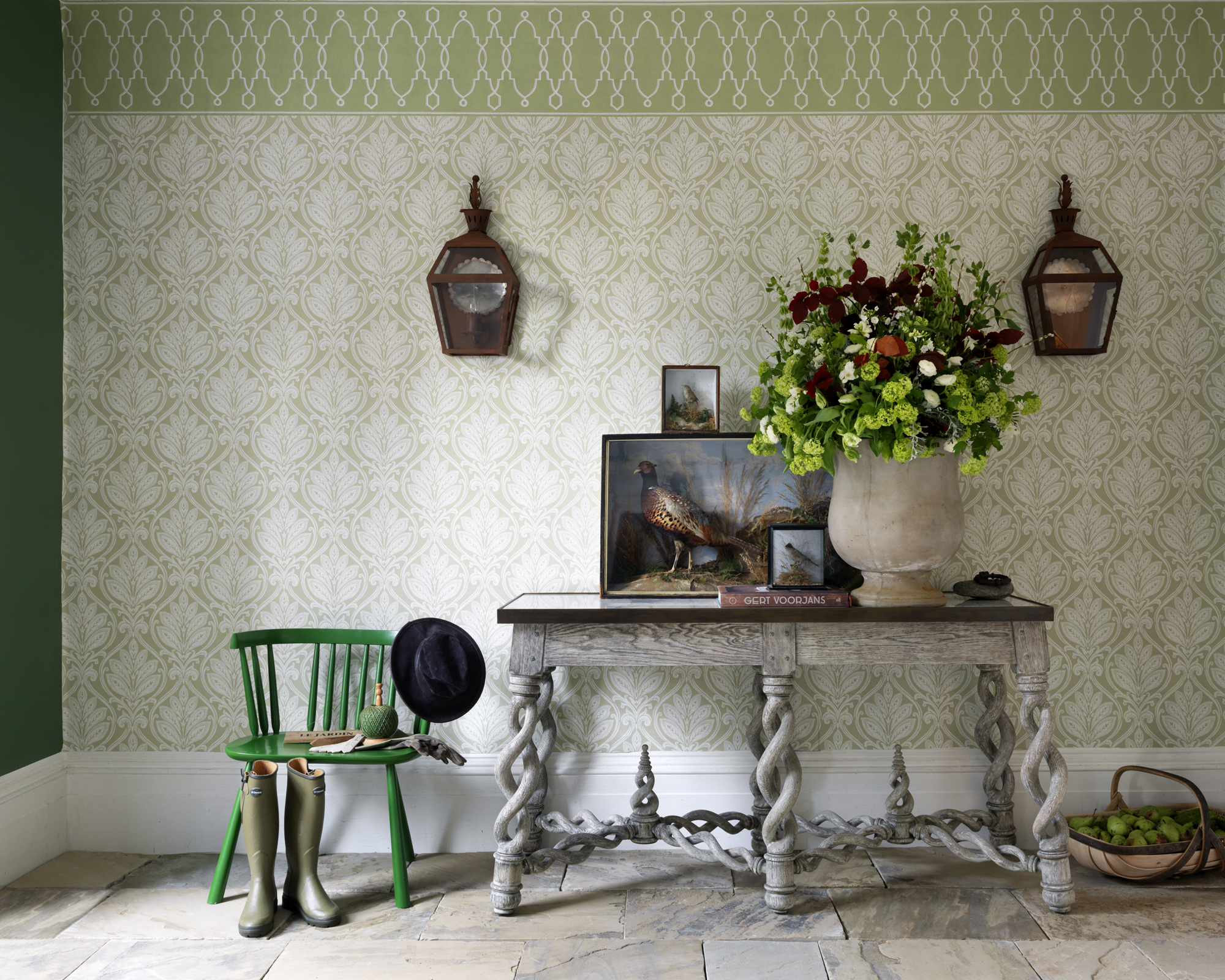
A duo of architectural feature lights will enhance an entryway by catching the eye, says Clara Ewart, head of design at Kitesgrove. ‘This light highlights the art and entry table decor in a contemporary way rather than using traditional picture lighting, and its sculptural silhouette adds a modern farmhouse touch.
7. Maximize light with mirrors
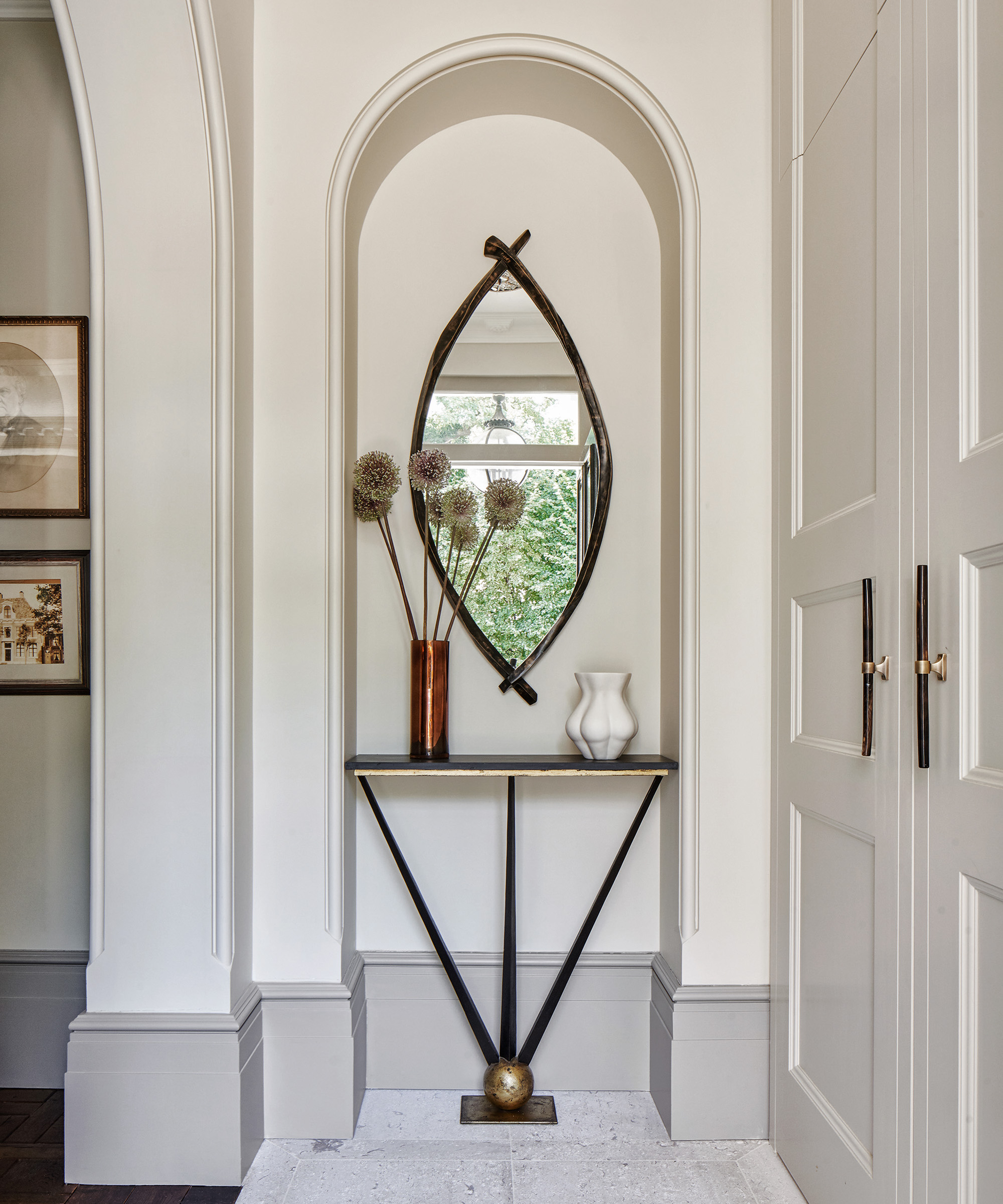
One of the oldest tricks is to use mirrors to maximize light in a compact or narrow hallway. In this diminutive space, a proportionally-perfect mirror fits neatly into an alcove. The mirror helps to project the sun throughout the room and increase the sense of space in a small hallway scheme. Plus, it will allow you to check your appearance on entry or exit.
8. Light a cozy entryway nook
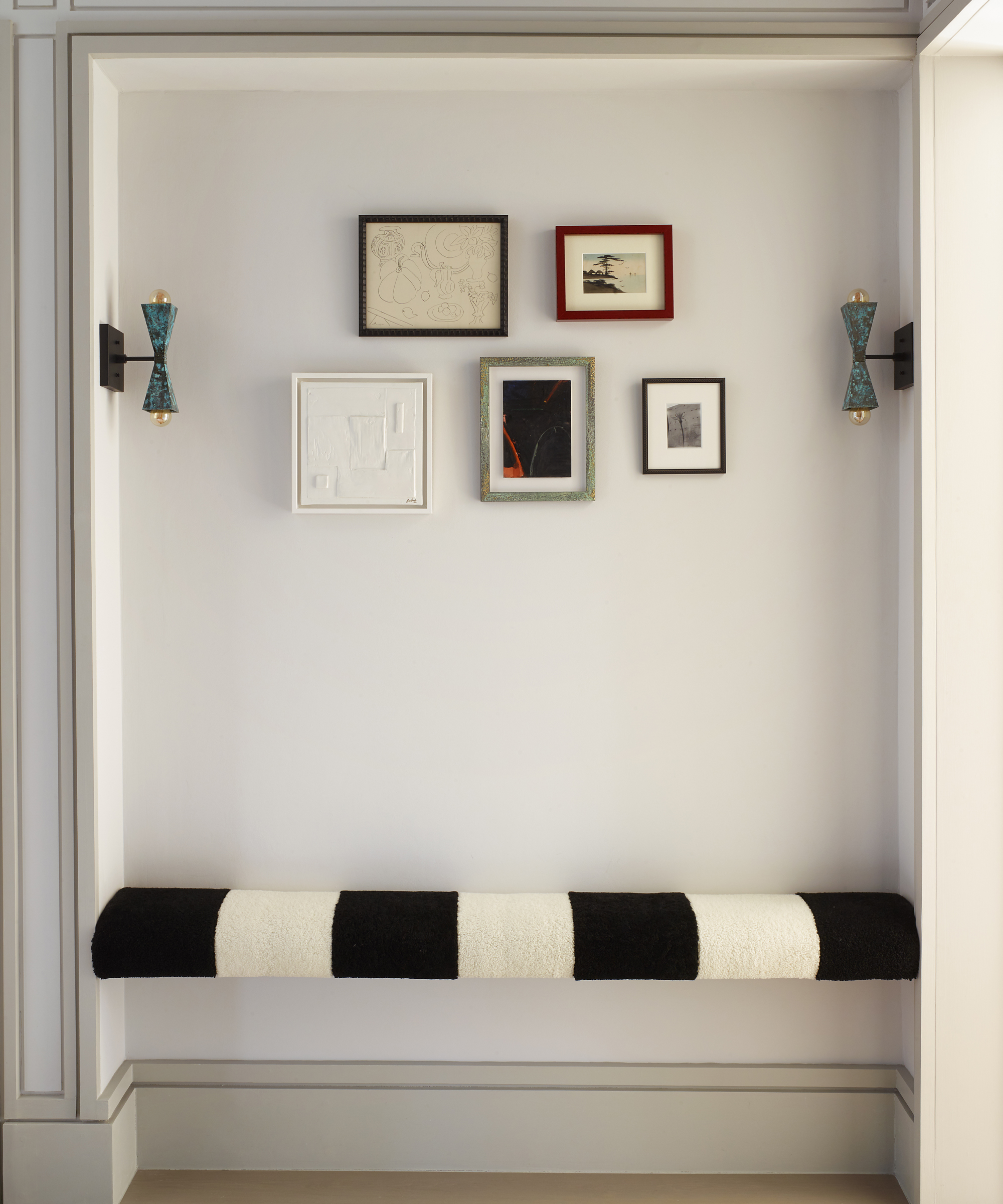
‘Wall lights in window seats or nooks can add to the feeling of comfort by providing a warming glow,’ says Mary Graham, co-founder of Salvesen Graham. A pair of double-ended wall sconces draw the eye, as well as creating a calm spot that’s perfect for curling up with a book.
9. Add interest overhead with a chandelier
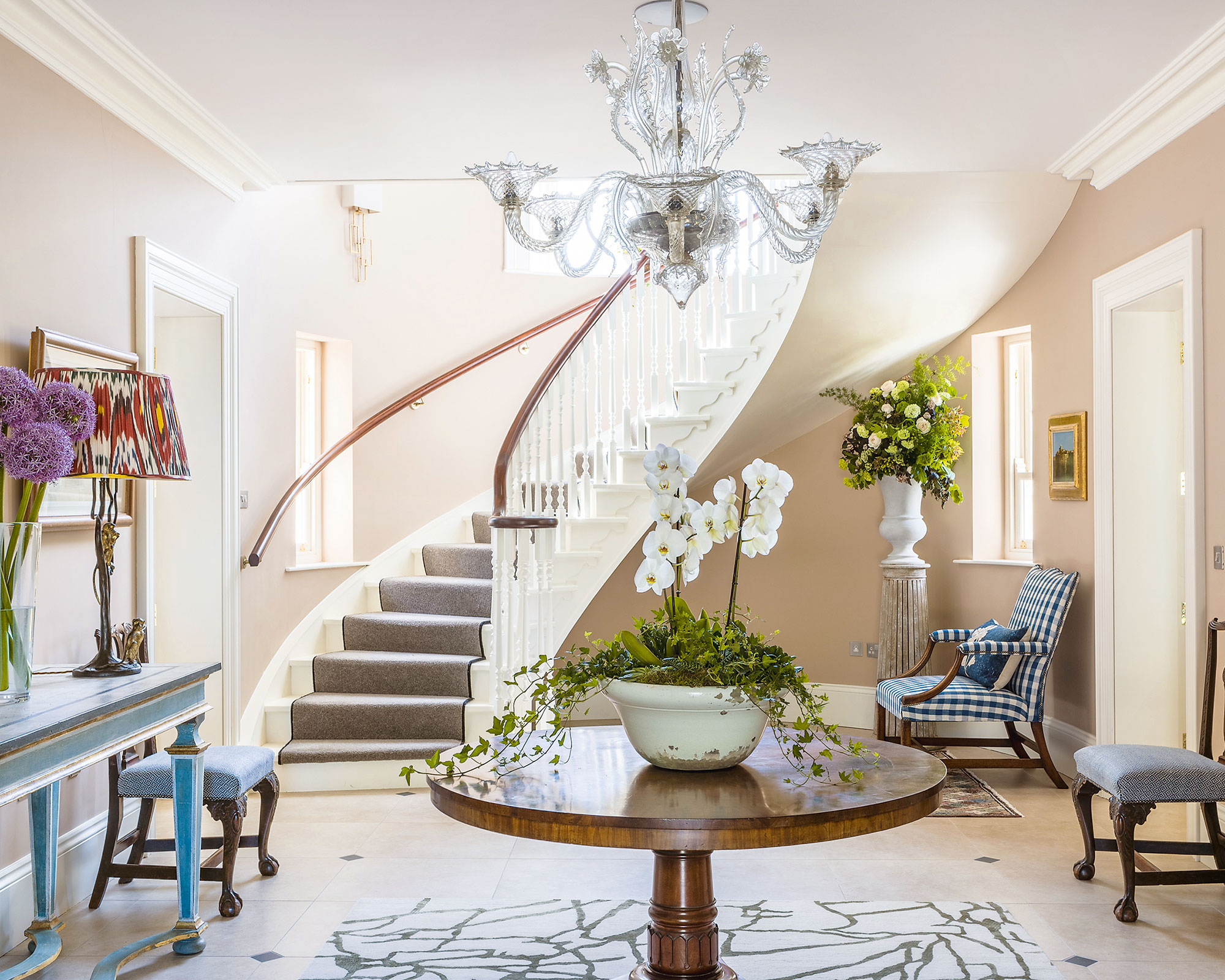
For any hanging light, the total drop available is a great starting point, says designer Chris Cox of Cox London. Ensure the design has space to breathe and can be hung reasonably low so that it relates to the furniture in a room and those using it.
‘In the 25 years I’ve been hanging entryway chandeliers, people tend to plan a pendant too high and, in reality, it looks and feels a little better lower.’
You can always hang a pendant lower over a console or centre table as long as it doesn’t detract from an important view or artwork.
10. Let lighting take a back seat

Entryway wall lights are a great way to bring interest to a wall or frame a piece of furniture. They also free up floor or table space. ‘Consider what height you put them – they are to light the room (or chair) not the ceiling, which too often happens,’ says Emma Deterding of Kelling Designs. In this design-led hall, the entryway lighting serves to highlight the modern hallway wallpaper rather than stand to attention in its own right.
What kind of lighting goes in an entryway?
Good lighting can transform an entryway. It can make a small space seem larger or a vast room more intimate, help create mood, enhance features and define zones. Such is its versatility, it is worth planning the hallway lighting at the beginning of a project.
Start with the overhead lighting: pendants or chandeliers are a beautiful way to ‘crown’ the lighting in an entry, says Lucy Barlow, creative director of Barlow & Barlow. ‘Then look at art – picture lights are a great way to add the second layer. The next are decorative wall lights installed at head height as an eye-level light source.’ Finally, table lamps will light the lower section of the hallway. ‘If you’re able to do this you might not need a single downlighter which, in more traditional schemes, is a huge advantage.
Lights tailored for specific tasks reduce eye strain and create a more comfortable environment. However, if you are keen to move away from directional lighting in the ceiling, the key is to introduce plenty of layers of illumination, including decorative pendants and wall lights, picture lights, uplighters and lamps.
How do I choose a hallway light?
There are various lighting tricks available these days to make an entryway appear more exciting and feel more spacious, says Sally Storey, creative director of John Cullen Lighting.
‘It’s best to aim for drama, not symmetry, by layering the lighting effects in a hallway,’ she explains. ‘Add impact by hanging an oversized pendant and dimming it for mood, but use this in conjunction with downlights that can spotlight a picture on the wall or highlight flowers on a console table.’ Then add a contrast by using wall lights or a downlighter to create a wash along one wall.
Another trick Sally recommends is to draw the eye down the hallway by lighting the half-landing or an object at the far end: this helps to foreshorten a long narrow space.
Sign up to the Homes & Gardens newsletter
Design expertise in your inbox – from inspiring decorating ideas and beautiful celebrity homes to practical gardening advice and shopping round-ups.

Jennifer is the Digital Editor at Homes & Gardens. Having worked in the interiors industry for several years in both the US and UK, spanning many publications, she now hones her digital prowess on the 'best interiors website' in the world. Multi-skilled, Jennifer has worked in PR and marketing and occasionally dabbles in the social media, commercial, and the e-commerce space. Over the years, she has written about every area of the home, from compiling houses designed by some of the best interior designers in the world to sourcing celebrity homes, reviewing appliances, and even writing a few news stories or two.
-
 The 5 worst things you can do to your fridge – these will drive up energy costs and result in pricey and regrettable repairs
The 5 worst things you can do to your fridge – these will drive up energy costs and result in pricey and regrettable repairsIt's crucial to swerve these blunders, appliance experts warn
By Ottilie Blackhall Published
-
 Orange and green is the bold color pairing quietly transforming homes in 2025 – here's 4 reasons why
Orange and green is the bold color pairing quietly transforming homes in 2025 – here's 4 reasons whyInterior designers are making the orange and green combination work wonders – this is how you can too
By Sophia Pouget de St Victor Published